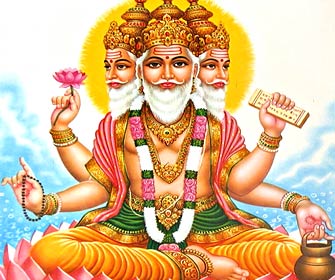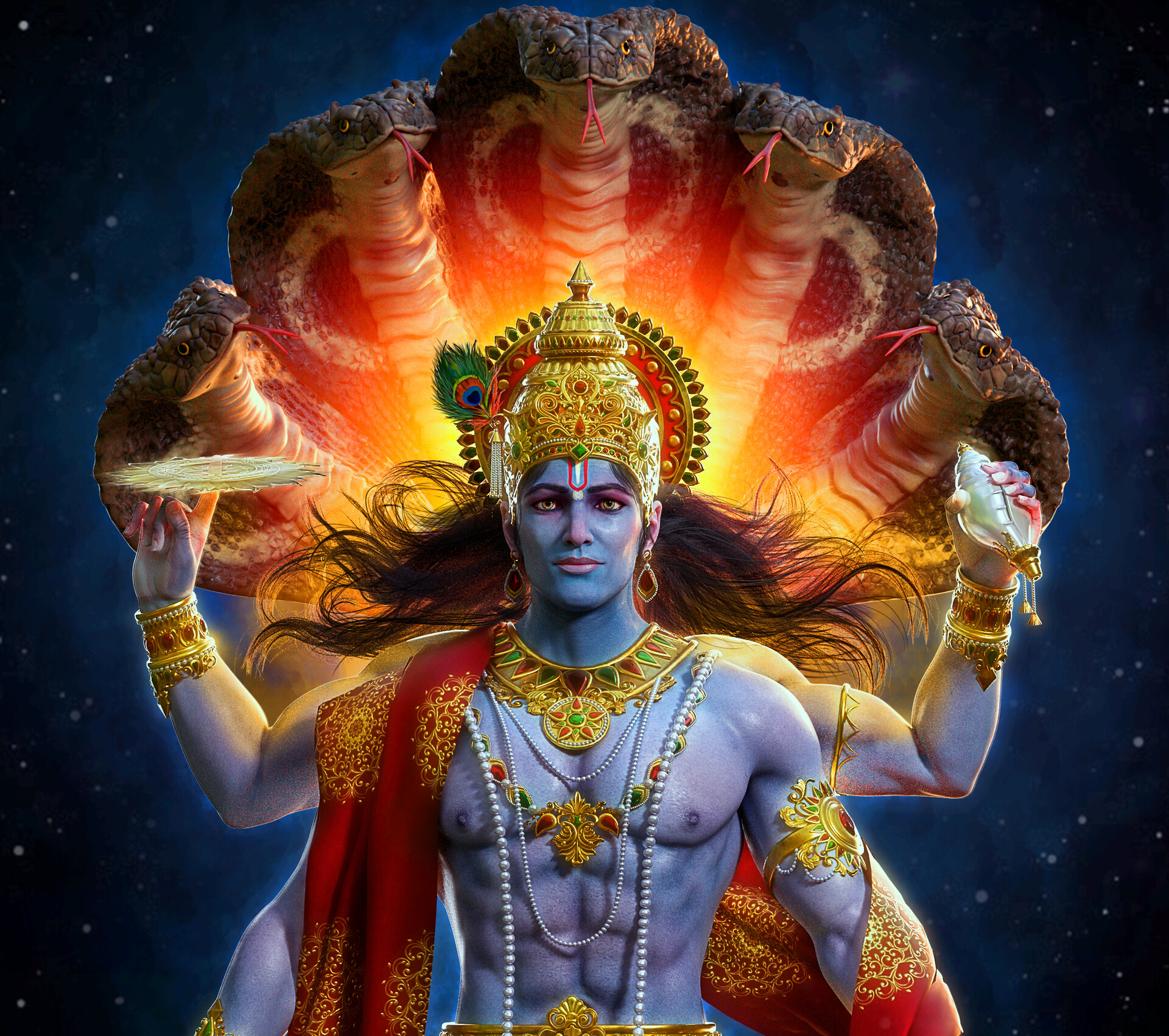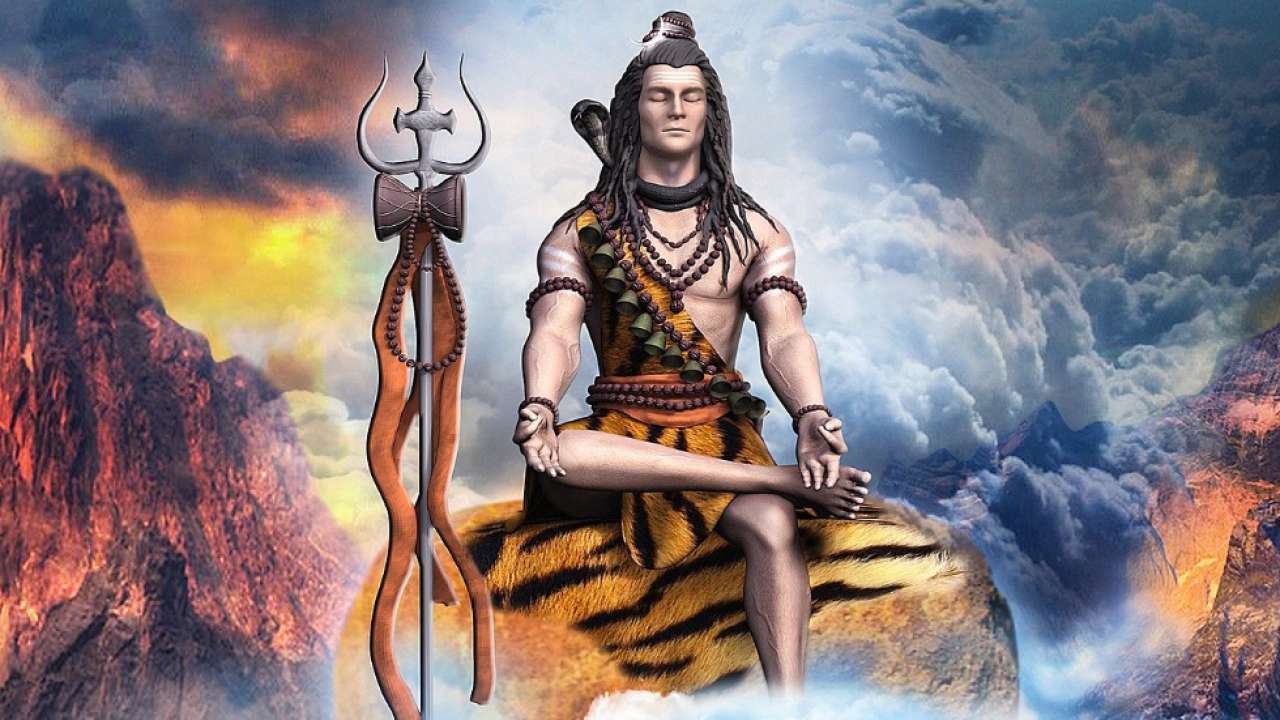No products in the cart.
The Hindu triumvirate is made up of three gods: Brahma, Vishnu, and Shiva, who are in charge of the world’s creation, maintenance, and annihilation. Vishnu is the universe’s preserver, whereas Shiva’s mission is to destroy everything so that it can be recreated. Brahma’s role was to create the planet and all living things. His name is not to be confused with Brahman, the absolute God energy that pervades everything.
Due to’mythological’ reasons, Brahma is not worshipped and just a few temples dedicated to him exist. Many temples and followers worship Vishnu (and His incarnations, Rama and Krishna), Shiva (and his many forms), and their brides. Saraswati, Laxmi, and Parvati are the wives of Brahma, Vishnu, and Shiva, respectively. They’re frequently referred to as Divine Mothers as a group (or Shakti). Durga and Kali are two of Parvati’s furious but strong manifestations.
“Shiva is regarded as the Destroyer, Brahma as the Creator: Vishnu maintains the cosmos in balance, serving as the Preserver,” argues Vinay Lal, a UCLA history professor. The worship of Brahma, on the other hand, is nearly nonexistent in India, and Indian sectarian history and conflict is mostly, though not solely, a fight between Shiva’s followers, known as Saivites, and Vishnu’s followers, known as Vaishnavites. The conflicting claims of Shiva and Vishnu’s devotees can be found in most Indian writings, dating back to the Mahabharata, but there have also been efforts to reconcile these claims with the concept that Shiva and Vishnu are one in reality. “There is no distinction between Shiva who exists in the guise of Vishnu, and Vishnu who exists in the form of Shiva,” the Harivamsa says.
Brahma is the deity of wisdom and the creator of the universe. He is one of Hinduism’s three most significant gods. Brahma is shown as a red-skinned guy dressed in white robes and riding a goose or swan. He bears the Vedas in four arms, as well as a sceptre, a spoon, a string of beads, a bow, and a water jug. Brahma’s birth is the subject of several legends. Brahma is said to have hatched from a floating golden egg. According to another legend, he was born from a lotus that sprang out of Vishnu’s navel. Satarupa, Savitri, Sarasvati, Gayatri, and Brahmani are some of the titles given to Brahma’s consort.
When the world is in a condition of chaos and ungodliness, Shiva is the god who destroys everything. He is the lord of the creatures as well. Shiva is related with the practise of meditation. Shiva’s hair and neck are entwined with a snake. He sits in a yogic pose on a deer hide while holding a trident. Shiva is seen riding a bull named Nandi. Parvati is Shiva’s wife, and Kartikeya is his son.
In the beginning, Vishnu was a lesser god. He afterwards became one of the most important Hindu gods. He takes the form of a four-armed man riding a legendary bird or reclining on a snake. Vishnu wields a conch shell, a discus, a lotus, and a mace in his four hands. Vishnu appears on Earth in the guise of a human, animal, or creature from time to time to restore the world’s balance of good and evil. He is said to have descended nine times already. Krishna, Rama, a tortoise, and a fish are just a few of his most well-known incarnations.
Brahma
The Hindu trio, or trimurti, begins with Brahma. Brahma is known as the “Father of All” and has long been considered the creator god. He is rarely shown and is not worshipped in the same way as other gods, in part because he has already completed his task of creating everything and will not act again until the next creation cycle begins. Ishwara or Mahanshakti are other names for Brahma. Saraswati, the goddess of wisdom, music, and poetry, is his shakti or consort. She is frequently pictured clutching a musical instrument. The swan (or geese), a symbol of wisdom, is Brahma’s and Saraswati’s mount. Brahma is also known as the “Self,” and is symbolised by the sound “Om,” which has no form. Brahma is not to be confused with Brahman, the supreme God energy that pervades everything.

Brahma is thought to be reflected in all Hindu gods. He established a teaching tradition and created the universe. He passed on what he learned to the great philosopher Narada Muni, who then passed it on to Vyasadeva, the “Bhagavad Gita” compiler.
The Hindu religion’s foundation, Vedanta, claims that Brahman, the ‘impersonal’ God and universal soul, is the Absolute Truth. Brahman has several duties to play: he is the creator, maintainer, and destroyer all rolled into one. The genesis of the trinity Gods, Brahma, Vishnu, and Shiva, may be seen here.
“Brahman is a Sanskrit term that alludes to a transcendent power beyond the cosmos,” Gavin Flood stated. As a result, it is frequently interpreted as ‘God,’ despite the fact that the two conceptions are not synonymous. Brahman is the force that sustains and upholds everything. Some Hindus associate this force with the self (atman), while others believe it is separate from the self. Although most Hindus do not worship Brahman, they believe that he pervades everything. Some Hindus believe that a specific god or gods are manifestations of Brahman.”
Vishnu
Vishnu, often known as the Preserver, is a divinity who has taken various forms. He is frequently represented with a crown and resting on a multi-headed snake with a lotus blossom growing from his navel, and is generally viewed as kind, forever youthful, and handsome. Normally, he has four arms. One wields a mace, which symbolises the fundamental power that all other forces are derived from. The others have a conch, a disc, a ball, or a lotus in their hands. Vishnu’s wife is Lakshmi, the Goddess of Wealth. The man-eagle, their mount in Garuda.

Vishnu, the historical deity, is a wonderful example of a single god who evolved over time from several gods. Vishnu was a midget in the early Vedic texts, capable of spanning the cosmos in three leaps. He was a lesser god who accomplished these exploits only to entertain the other gods, and the Rig Veda only mentions him five times. His antics as a dwarf made him famous, and he is thought to have fused with an early sun deity to become a great god.
Vishnu is revered in all of his incarnations, and he is frequently seen as the personification of the whole Hindu pantheon. Other gods, like as Agni, Indra, and Yama, are frequently represented on different sections of his body. Vishnu’s navel grew a lotus blossom, which gave birth to Brahma. Lord Jagannath, a reincarnation of Vishnu, was sculpted by a heavenly carpenter from a miracle log, together with his brother and sister. Lakshima is Vishnu’s wife.
Almost everyone in India is familiar with Vishnu’s incarnation as Ram (Rama in Sanskrit), a prince from the ancient north Indian kingdom of Ayodhya, as told in the Ramayana cycle of legends (The Travels of Ram). On one level, Ram is exiled from the kingdom and forced to travel through the jungles of southern India with his lovely wife Sita and his devoted younger brother Lakshman. The demon king Ravana kidnaps Sita and takes her to his stronghold on the island of Lanka after many adventures during which Ram meets the king of the monkey realm and joins forces with the renowned monkey hero Hanuman (modern Sri Lanka). The demons are subsequently attacked by Ram and his animal companions, who defeat them all and return triumphantly to North India to reclaim his rightful kingdom. This narrative has been told by village storytellers, street theatre performers, the movies, and the national television network. The yearly celebration of Dussehra commemorates Ram’s adventures and eventual triumph in various regions of the country, but mainly in North India, and features the public burning of gigantic effigies of Ravana at the end of several days of partying. Everyone knows that Ram is actually Vishnu, who descended to purge the earth of demons and establish an ideal kingdom of righteousness — Ram Raj — that still serves as a model in modern India. Sita is actually the goddess Lakshmi, the embodiment of feminine beauty and devotion to her spouse. Shri, or Lakshmi, later became the goddess of wealth, plenty, and happiness. Hanuman, the devoted sidekick with immense physical and magical abilities, is one of the most popular figures in Hinduism, with temples dedicated to him all across the country.
Shiva
Because he completes the Hindu cosmic cycle and heralds in the return of creation, Shiva (Siva) is revered as the destroyer, preserver, and creator. He has a vertical third eye in the centre of his forehead and wears his hair in a chignon with curls. He is frequently represented with four limbs and a trident, as well as a string of beads, a symbol of his teaching. Rudraksha beads are the name of the beads, which refers to his first name. Shaivism is a Hindu religion that worships Shiva as their principal deity.

Shiva was known as Rudra in Vedic poetry, a minor god who guarded animals and was connected with the howl of the wind and medicinal plants. He had both a good and bad aspect to him: he could both cause and cure sickness. He is only mentioned three times in the Rig Veda. Rudra absorbed and amalgamated with an early fertility deity, Shiva, throughout time. Shiva had grown famous by the second century B.C., as evidenced by the vast quantity of stone lingams, Shiva’s emblems, discovered at archaeological sites. There were Shiva cults in the 2nd century A.D., made up of worshippers who made sexual gestures towards women and sneered during rites, and slept on the ashes of funeral pyres. Shiva had become a more prominent Hindu God by the seventh century.
Shiva has a dark aspect that stems from his position as destroyer, but it is also linked to asceticism. He’s sometimes represented as a poor holy man with matted hair and a serpent-like Brahma cord wrapped around his bare chest, accompanied by animals and devotees. He perseveres the world while he meditates, same to how Vishnu does when he sleeps.






